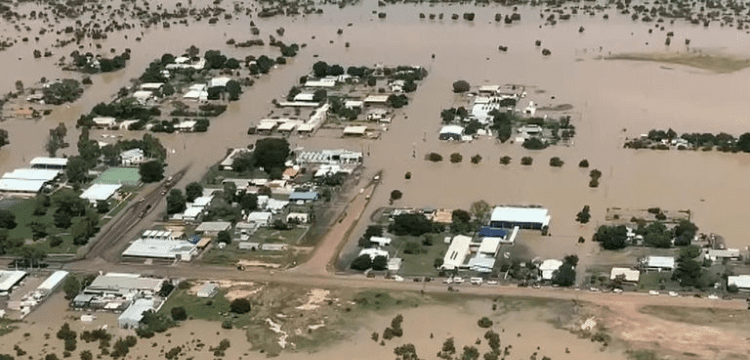[vc_row][vc_column][vc_column_text dp_text_size=”size-4″]Residents in Australia’s Queensland state have been advised to minimise their movements owing to crocodile-infested waters.
Following severe rain in the previous week, around 100 residents were evacuated to higher ground in the worst-affected isolated town of Burketown, about 1,300 miles (2,100km) northwest of state capital Brisbane.
According to the Sydney Morning Herald, the Gregory River peaked at 12.3 metres, nearly doubling the previous record of 6.78 metres (22.2ft).
Due to recent crocodile sightings, Queenstown Police have advised Burketown residents to limit their travels in flood water.
“Due to the current conditions, it is unsafe for displaced people to return to their homes and police remind residents to limit movement in the flood water due to unseen hazards and recent crocodile sightings,” police said.
Read More: After SVB collapse, Chinese companies and founders race to assure investors.
Burketown aerial photographs show buildings and swaths of land flooded underwater.
A helicopter pilot also saved a newborn kangaroo from crocodile-infested waterways, according to police.
Police rescued a baby kangaroo from floodwaters behind a residential community in Burketown yesterday. A helicopter pilot flew over at the time and spotted two very large crocs nearby – a timely reminder to stay out of floodwaters as you never know what is lurking beneath 🦎 pic.twitter.com/cLI3QsrOZV
— Queensland Police (@QldPolice) March 13, 2023
The pilot flew over and noticed “two extremely large crocs close” before bringing the kangaroo to dry land, according to the force.
On Sunday, Dan McKinlay, chief executive of the local council in charge of Burketown, stated that 97 residents had been evacuated out in the previous 48 hours.
Water levels in the area were “at previously unknown heights,” and the town appeared to be “sitting in the middle of an ocean,” he told ABC radio.
The Bureau of Meteorology in Australia forecast that water levels in the area will peak on Sunday and that they had already eclipsed a March 2011 record of 6.78 metres.
According to the Department of Meteorology, up to 293 mm of rain fell on Thursday and Friday, breaking the previous record set in 2011.
The catastrophe follows repeated flooding in Australia’s east during the last two years as a result of a multi-year La Nina weather pattern, including once-in-a-lifetime floods in the neighbouring Northern Territory in January.[/vc_column_text][/vc_column][/vc_row]











